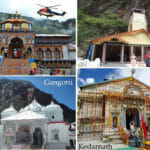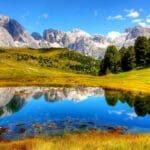Coming Soon
Day 01 – Arrival Delhi
Arrive Delhi. Meet & greet on arrival by our representative and transfer to hotel.
DELHI: one of India’s fastest growing cities has spread far beyond the “seven cities” created between the 13th and the 17th centuries. It has sprawled over the west bank of the Yamuna and now straddles the river. Remnants of the past survive cheek -by-jowl with skyscrapers, residential colonies and bustling commercial complexes. Delhi has some of the finest museums in the country. Its boutiques and shopping arcades offer access to a wealth of traditional and contemporary crafts from all over the country. It has specialty restaurants to please the gourmet, open parks and gardens ablaze with flowers, and in the winter months particularly, a variety of cultural events. Its many-layered existence is tantalizing and can entice the curious traveler into a fascinating journey of discovery.
Overnight at hotel.
Day 02 – Delhi
Morning: sightseeing of Old Delhi takes you to Jama Masjid, – The largest mosque in India. Visit the magnificent Red Fort, – a marvel in red sandstone, built on the banks of River Yamuna by the Mughal emperor Shah Jahan. Drive past Chandni Chowk, once an imperial avenue of Mughal Royalty which today is the busiest commercial area of the city. Visit Raj Ghat (memorial to Mahatma Gandhi). (RED FORT IS CLOSED ON MONDAYS).
Drive past the India Gate (war memorial dedicated to the lives of laid down by the Indian Soldiers), the president’s residence – formerly the Viceroy’s Palace, parliament House and the Secretariat buildings, – an interesting blend of the Victorian and 20th century architecture.
Afternoon: sightseeing of New Delhi. Visit the 12th century Qutab Minar, gracefully hand-carved for its entire height of 234ft, and the iron pillar, which has withstood the ravages of time and not rusted even after 1500 years. Visit the mausoleum of emperor Humayun – a forerunner of the Mughal style of architecture and the imposing modern Lakshminarayan temple. Drive past the India Gate (war memorial dedicated to the lives of laid down by the Indian soldiers), the president’s residence – formerly the Viceroy’s Palace, parliament House and the Secretariat buildings, – an interesting blend of the Victorian and 20th century architecture.
Overnight at hotel.
Day 03 – Delhi – Jaipur (260 Kms – 06 ½ Hrs)
Morning: Leave for Jaipur. On arrival, check-in at the Hotel.
JAIPUR: Jaipur, the vibrant capital of Rajasthan, is popularly known as the ‘ Pink City ‘ because of the pink-coloured buildings in its old city. It sits on a dry lake bed in a somewhat arid landscape, surrounded by barren hills surmounted by forts and crenellated walls. This buzzing metropolis is certainly a place of wild contrasts and a feast for the eyes. The city of Jaipur is the prime example of the culture and traditions of this region. In this land, towering forts were built as much for ostentation as for intimidating the enemy and desperate battles were fought by rulers who were great patrons of the arts. The royal city of Jaipur owes its name to the founder of the city. It was Great Warrior King Sawai Jai Singh II (1693-1743) who laid the foundation of the city in 1627. Being capital to the northern Indian state of Rajasthan, the city is mirror to every thing that Rajasthan signifies, be its culture, tradition, society, and most importantly people.
Rest of the day free.
Overnight at hotel.
Day 04 – Jaipur
Morning: visit of Amber Fort with elephant ride. Amber is a classic, romantic Rajasthani Fort Palace. The rugged, time-ravaged walls of the Fort may not look beautiful from the outside, but the interior is a virtual paradise. Miniatures painted on the walls depict hunting and war scenes, apart from festivals. Precious stones and mirrors are embedded into the plaster. A major attraction at Amber is the Elephant Ride all the way up to the Fort entrance. This journey on caparisoned elephants is bound to enrich your memories with the Royal lifestyle of the Maharajas and leave you with a truly unforgettable experience. Inside the Fort visit the Jag Mandir or the Hall of Victory. Inside the Jag Mandir is the famed Sheesh Mahal – a room with all the four walls and ceiling completely embedded with glittering mirror pieces,specially imported from Belgium. En-route to Amber Fort, you will have a brief photography stop at Hawa Mahal – the Palace of Winds.
Afternoon: – city tour of Jaipur which begins with a visit to the Maharaja’s City Palace, the former Royal residence, part of it converted into a museum. A small portion is still used by the Royal family of Jaipur. Built in the style of a fortified campus, the palace covers almost one-seventh in area of the city. One of the major attractions in the museum is the portion known as Armoury Museum housing an impressive array of weaponry-pistols, blunderbusses, flintlocks, swords, rifles and daggers. The royal families of Jaipur once used most of these weapons. Later visit the Jantar Mantar, which is the largest stone and marble crafted observatory in the world. Situated near the gate of the city palace, the observatory has 17 large instruments, many of them still in working condition.
Overnight at the Hotel.
05 Jaipur – Agra via Fatehpur Sikri (235 Kms – 04 ½ Hrs)
Morning: Leave for Agra by surface en-route visiting “FATEHPUR SIKRI” Situated around 40 km from Agra built by Emperior Akbar in 1569 and abandoned after 15 years due to scarcity of water. This was the capital of the Mughal emperor Akbar between 1570 to 1586. Fatehpur Sikri’s sprawling structure is made of red sandstone and combines both Hindu and Muslim architecture. The main entrance to this walled city is through the 175 feet Buland Darwaza. The finest monuments within this area are the Diwan-I-Am, Diwan-i-Khas, Panch Mahal, Jama Masjid and Panch Mahal.
Continue drive towards Agra,
On arrival in Agra check-in at the Hotel.
AGRA: Best known as the city of Taj Mahal, the world’s most famous monument of love, is situated along the banks of the River Yamuna. Agra, with its laid – back lifestyle and its immense wealth of architecture, handicrafts and jewellery, is amongst the most remarkable city of the world. In terms of ambience it is still associated with its Mughal period led by Babur, who arrived in 1526. Agra grew in prominence as almost all of India came under the rule of Mughal empire but Agra reached its zenith under the rule of Akbar, Shah Jehan and Jehangir. It was under the rule of Akbar that Agra become a leading centre of art, science, commerce and culture.
Late Afternoon- visit the Agra Fort. The foundation was laid by Emperor Akbar in 1565 and continued till the time of Shahjahan. The high red stone monument stretches for around 2.5 kms, dominating a bend in the river Yamuna northwest of the Taj Mahal. The palace is a notable for its smooth blending of Hindu and central Asian architectural styles.
Overnight at hotel.
Day 06 – Agra – Delhi (204 Kms – 04 Hrs)
Morning: visit Taj Mahal which is the seventh wonder of world, built by Shahjahan as a memorial to his wife Mumtaz Mahal by the banks of river Yamuna. After her untimely death, Shahajahan had her mortal remains buried in this mausoleum. And after his own demise he was placed to rest next to his beloved queen in the same mausoleum. The great monument took almost 22 years to build and was completed in 1653.
(TAJ MAHAL CLOSED ON FRIDAY)
Later drive to Delhi. Arrive Delhi proceed for optional wash-n-change to the hotel near to the Airport.
Later in the evening in time transfer to international airport for onwards flight.



